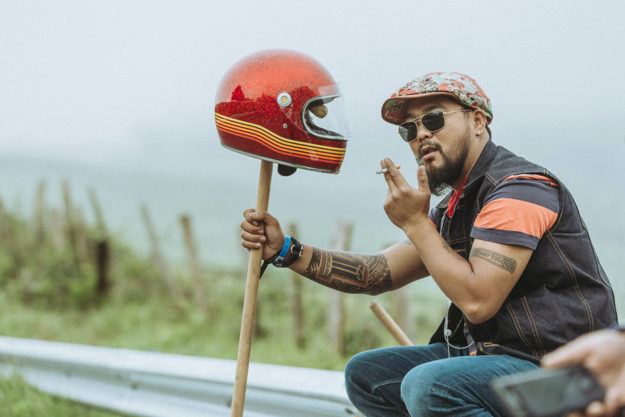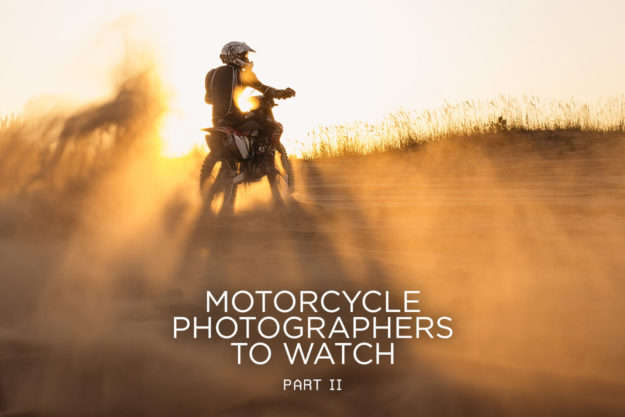
We’re often asked what the ‘EXIF’ in Bike EXIF means. If you don’t know, it stands for ‘Exchangeable Image File format,’ referring to the data a digital camera saves when it takes a snap.
Basically we care as much about photos as we do about motorcycles. Without good photos, Bike EXIF wouldn’t be half the site it is.
So for the second time, we’re profiling three motorcycle photographers to watch. Last time we featured Aaron Brimhall, Jun Song and David Marvier; today we’re chatting to Anthony Scott (USA), Devin Paisley (SA) and Mihail Jershov (UK)—guys who all excel in natural light environments.
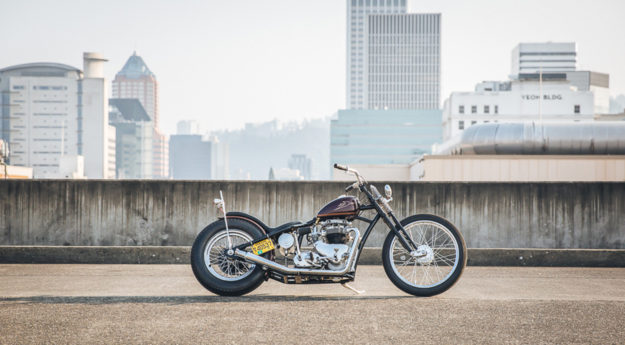
ANTHONY SCOTT
Where are you based? Portland, Oregon. I’m originally from Birmingham, Alabama but moved to Portland in 2013 after getting out of the military.
What bike do you ride? I have a few, but my daily is my Harley-Davidson Springer. On special occasions I like to take out my race-inspired Honda CB550 (below) that I call #27—it’s part of a 27 bike series. Or #26, an RD400. I’ll be adding more to my special occasion list, as I’m currently working on #25 and #24.

Where do you get your inspiration? Truthfully I find inspiration in a lot of different things. The bikes that I’m building are a homage to the Moto GP legends and the vintage racing era, so I gather a lot of inspiration there. I just love the style of bikes back then and how they really captured the imagination of future generations. I feel like they gave us dreamers something really good to dream about.
All you have to do is look around you and there is inspiration everywhere. For me, it always evolves and changes, so I let whatever I’m daydreaming about at the moment influence me the most. I just have to make sure I don’t stay stagnant. I’m always playing around with new business ideas, and ways to incorporate all of my loves and interests into one community hangout spot: everything from vintage cars, motorcycles, surfboards, and good faded denim. My search is still ongoing for a space to do all of this, but I’m excited to see what the future holds.
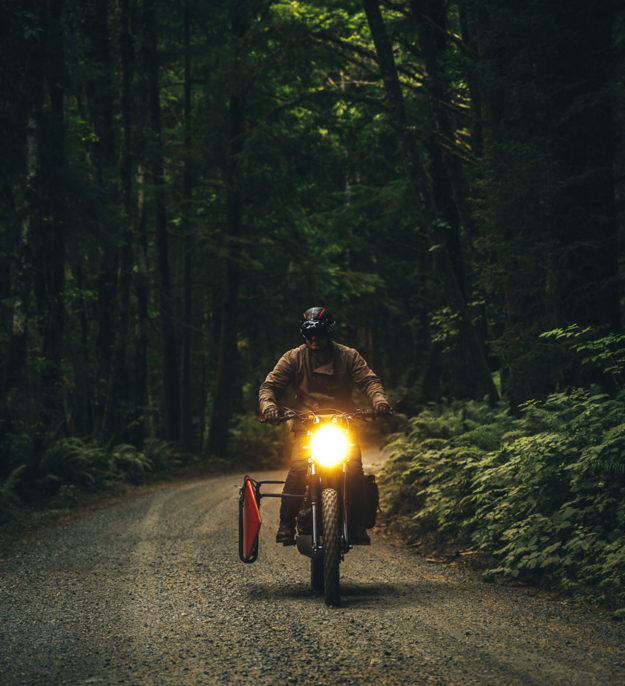
How did you get started in motorcycle photography? I stumbled upon photography a few years ago during a period in my life when I was really struggling with PTSD. My camera became an escape; something else that I could focus on that later helped me work through that time. I still remember like it was yesterday, seeing a feature on a Seaweed & Gravel build. The photos were so beautifully shot, and it was those photos that pushed me to want to learn more about motorcycle photography—any and all types.
My first camera was a Canon T2i that I purchased from a nice elderly couple on Craigslist. I quickly realized it was a lot harder than it looks to capture the type of images I’d seen many times before. But this just fueled me to get better and try harder. I’m still not sure how much better I’ve gotten, but the process brings me a lot of joy!
Are you a full-time photographer? I wish I could be a full time photographer, but I just do it as a hobby. 100% of my photography is done for free. I’m really just having fun, and I like helping others fulfill their dreams through photography.
So many people dream about having their bike featured on Bike EXIF and in print publications, something I can totally relate to. People have helped me out along the way, and I’m just trying to return the favor. I also feel that keeping it as a ‘just for fun’ hobby takes some of the pressure off (until it’s the first of the month and rent is due, then sometimes I re-think my strategy, ha!)

What equipment do you use? Canon EOS 5D Mark II body, Canon EOS 7D Mark II body, Canon EF 24-70mm f/2.8L lens, Canon EF 70-200mm f/2.8L lens and Canon EF 50mm f/1.2L lens. I also play around a little with a drone and a GoPro Hero 5.
Your favorite shooting location? This is a tough one, and totally depends on the purpose of the shoot and the bike itself. Some bikes call for a super gritty industrial spot, and others call for a wide-open field or nature-filled spot. You can also go somewhere more than once, and each time can be different depending on the weather, time of day, etc. If I really had to pick a favorite, it would be a good moody or foggy backdrop somewhere in the Pacific Northwest.
Your favorite subject matter? I recently started doing more portrait work and it has been my most fulfilling adventure yet. It’s challenging to capture a person just right, something natural and in the moment. Some of my other favorites are vintage custom bikes and vintage cars, hands down. I’m getting better at mixing all my interests together and that brings me a lot of joy.
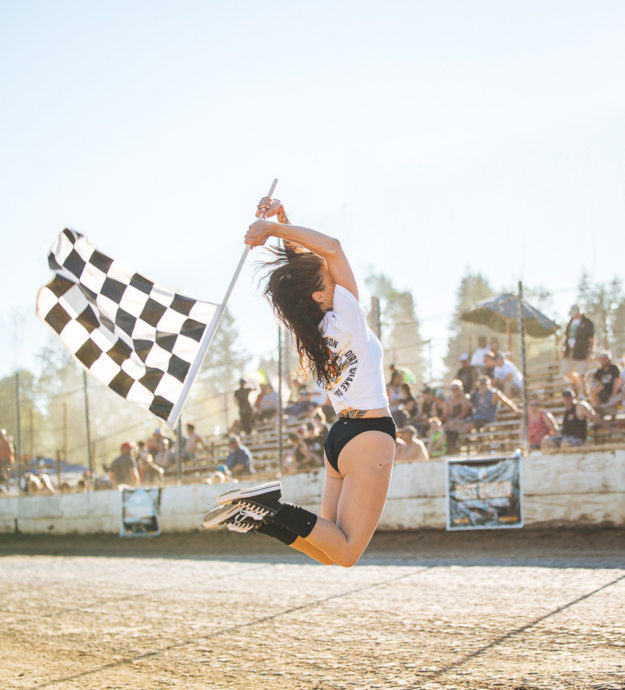
Let’s talk postproduction—what’s your process? How do you feel about filters? Ah, the question we all fear. A lot of people have firm opinions on the use of filters. The camera will always capture my subject, but programs like Photoshop and Lightroom help me fine-tune my work as an artist. As an artist, we really have the freedom to take our photo wherever we want them to go.
I often find raw photos just as appealing as something that has been re-worked. It will always depend on each individual situation and shoot. Not all situations can be ideal (difficult lighting, distracting background), and that’s when postproduction comes handy. There can always be things that need cleaning up or enhancing, but I also want to make sure my photos feel realistic and not over-processed. Overall, my feelings are just to do what feels and looks best to you.
What about Instagram? I think Instagram is a great avenue to connect with others and share your passions, but you just can’t take it too seriously. Not everyone will be your biggest fan, and some of them will freely voice that. You just have to do what you love, and take it all with a grain of salt.
One day I might post a photo that I’m really proud of, and it will get zero love. The next I might throw up a photo that I casually snapped running around Portland, and it will blow up. It’s totally unpredictable. I’ve met some pretty incredible people through Instagram that I may not have met otherwise, and those opportunities and friendships are really cool.
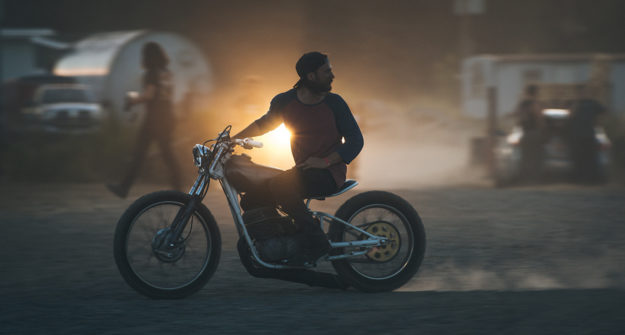
Tell us about shooting Dirt Quake For the last few years I have had the opportunity to attend and photograph Dirt Quake USA. This past year I was asked by See See Motorcycles and Sideburn Magazine to be the official photographer. It blew my mind to have the chance to photograph, race, party, repeat with these two wonderful companies. They literally kill it every year. For months I was stoked, but the closer the date came I started to notice a pit at the bottom of my stomach. The pressure was on. Help was on the way, my younger sister flew in for moral support, which I think was just a guise to get a University Summer Break at her big brother’s expense (but I love her). My partner Melissa Bryan tried to assure me it would be fine and she would be there as well, but I couldn’t shake the feeling.
The first day was a blistering 100+ degrees, no shade, fast track and fast times. It was a whirlwind. My body was sore in places I didn’t know existed. Unfortunately the pit in my stomach was still there. It was not until the next day when Hooligan Rider Jimmy Hill sent his Indian Scout and I caught him full frontal that it hit me. This is supposed to be fun dude, just enjoy yourself!
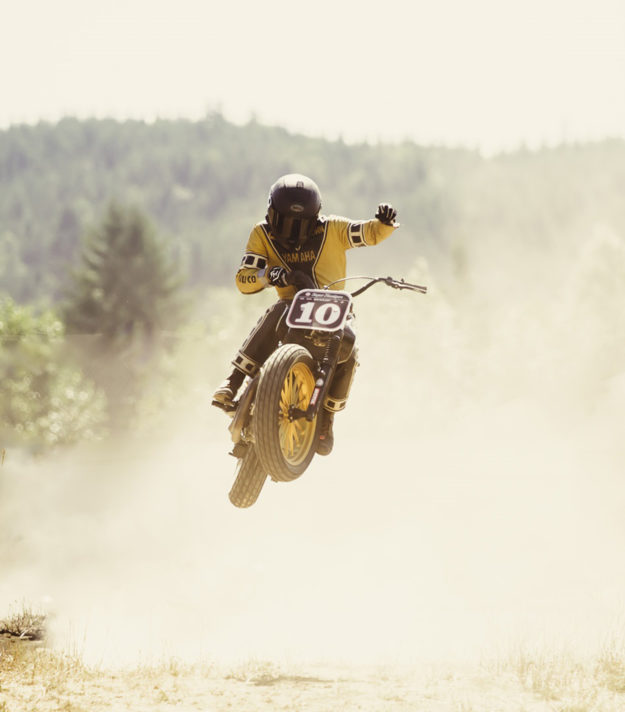
If you had one piece of advice for readers who like to shoot bikes, what would it be? Don’t put too much pressure on yourself, you’ll learn as you go. Everyone is going to have a different style, and that’s what makes each photographer and shoot so unique. My best advice, as clichéd as it may sound, is just have fun and spread good vibes. Oh, and Stay Enthused.
Enginethusiast Web | Instagram
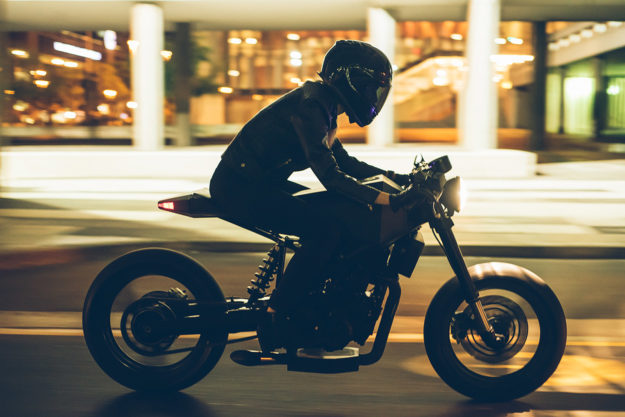
DEVIN PAISLEY
Where are you based? The best motorcycling city in the world—Cape Town, South Africa.
What bike do you ride? I ride all the bikes. Jokes! I enjoy 250cc dual-sport bikes: I have a Yamaha TTR250 and a Honda XR250 Tornado that I ‘bought for my fiancé.’ I also have a Honda CX500 café and a Montesa Cota 349 project on the go.
Where do you get your inspiration? From the effect that motorcycles have on people. Motorcycling is contagious and once it’s in your bones… well, you know the rest. All sorts of bikes inspire me, but I love bikes with a story. In my eyes, a beat-up old thumper that has seen its fair share of action has as much character as a beautifully built custom bike.
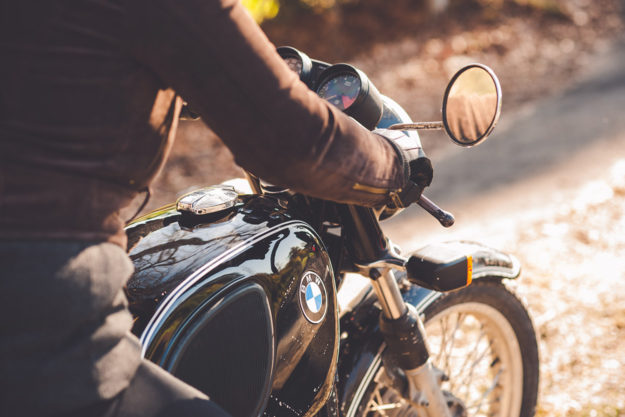
How did you get started in motorcycle photography? I started riding in 2004 and I picked up my first decent camera in 2007 when traveling overseas. I guess as the two passions grew they found one another, helped along by my first attempt at a motorcycle business—Rebellian Custom Bikes. I was on the creative side and had to make our very average bikes look much better in photos.
Are you a full-time photographer? I also own and run a community motorcycle garage called the Woodstock Moto Co. in Cape Town. I started it three years ago as a place to store and work on my motorcycles, but it has evolved into a DIY motorcycle garage, café and general hangout that brings together people who are passionate about bikes. (Cue hipster comments on coffee and motorcycles).
Prior to this I had a brief stint trying to build bikes for money, and before that I worked as a model, which took me all over the world and exposed me to both photography and different motorcycle cultures.

What equipment do you use? I shoot on Nikon. My father was a photographer in the 70s and had a lot of old lenses lying around which fit straight on the new DSLRs. I keep it simple with primes—50mm, 85mm and 135mm. I also have a FujiFilm X100T as a pocket camera—what a great little snapper!
Your favorite shooting location? I’m spoiled in Cape Town. We have everything here—the ocean and mountains meet to create moto-heaven. Urban concrete jungle, perfect asphalt passes, dirt for days and everything in between. I try not to use the same location twice for a shoot—it gets tricky, but it forces me to keep exploring and keep finding gems.
Your favorite subject matter? Motorcycles, obviously! I enjoy telling stories through images. Whether that’s an off-road weekend adventure, or a motorcycle hoarder’s jam-packed garage, it’s the human emotions that I’m after. If I’m just shooting a bike the images need to make the viewer feel the emotions too.
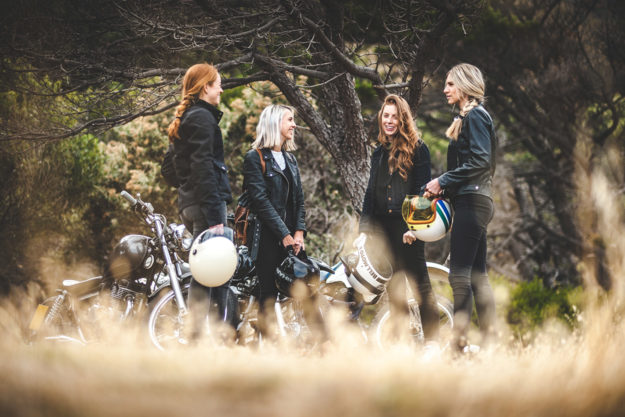
Let’s talk postproduction—what’s your process? How do you feel about filters? I shoot in a way that keeps post to a minimum. I use Lightroom for editing and cataloging and only if I need to remove elements that are distracting to the viewer’s eye, I’ll use Photoshop. On set I only shoot natural light as it keeps equipment to a minimum and allows maximum flexibility.
Filters… hmm… I don’t really feel much about them other than cringe when some one goes way overboard. I guess I try to create my own style, which I then use as filters in my postproduction process.
What about Instagram? Hi my name is Devin, and I’m an addict. It’s an interesting topic and something I’ve been thinking of for quite a while. I am guilty of spending too much time on it and it is having a serious effect on my productivity. On the one hand the content being generated is inspirational and motivational—but on the dark side is it secretly makes you feel inadequate. I think that the next decade will be very interesting, looking at the psychological effects that social media has had on humans.
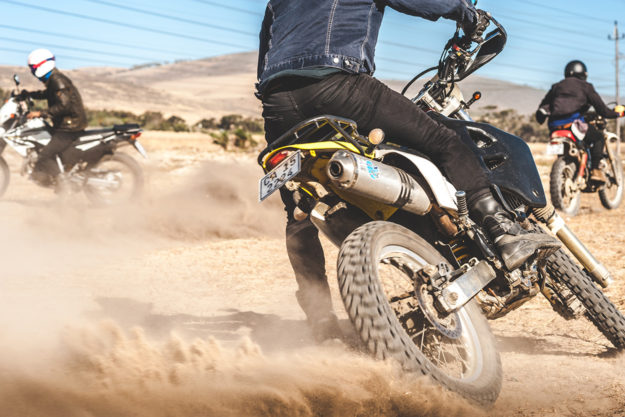
From a photography perspective it makes images so disposable, and it’s such a waste on such a small screen (I rock an iPhone 5). Images flash by in less than a second and people don’t have any concept of the amount work that goes into creating these visual feasts.
There’s another side of Instagram that is highly annoying—the stealing of images and the numerous accounts that re-post photographer’s work with out permission or credit. I’ve had some unbelievable conversations online with people who have no concept of image rights or respecting photographers. Don’t get me started on corporate brands sharing images without permission or compensation. Actually, never mind, apparently it’s good ‘exposure.’

Tell us about shooting the BMW R nineT Racer Wes from Bike EXIF is lucky enough to live in Cape Town too—so he’s always roping me in to do shoots. When he mentioned the R nineT rac… I interrupted him and said I was game. I like to be on set before the sun gets up to get that soft beautiful light and then shoot as it transitions to daylight. The morning of the R nineT Racer shoot I met Wes in the city and we were greeted by foggy and gloomy weather. Luckily, as we headed up to Table Mountain (Google it) we emerged from the fog onto the twisties.
I wanted to capture the bike in motion, as the shape of the bike just oozes speed, so we spent a lot of time on the panning shots (I always shoot real motion and don’t add blur in post). I also shoot from the hip while riding—but this can be dangerous and I’ve had a few close calls. The shoot took around two hours, but as photographers know, selection and editing takes much longer. This was shot on my old tank, a Nikon D700 with the following lenses: 18-35mm, 50mm f1.8, 85mm f1.8 and 135mm f2.
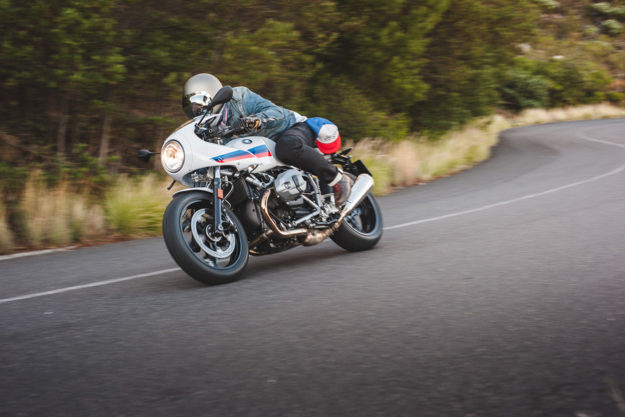
If you had one piece of advice for readers who like to shoot bikes, what would it be? Learn the rule of thirds, composition is critical, move around to find the sweet spot. Nail that and you’ll get banger shots, even with your phone.
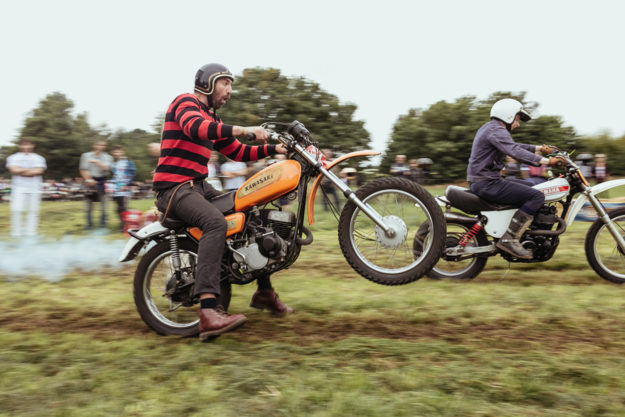
MIHAIL JERSHOV
Where are you based? London, UK, but I’m originally from Riga, Latvia.
What bike do you ride? I used to own a really cute, but gutless, 1979 Honda CG125, but I sold it and am currently working on getting my full license.
Where do you get your inspiration? I’m really inspired by work of some great photographers like Aaron Brimhall and Laurent Nivalle. I love the way they manage to capture the excitement of riding and make you want to be that person from the photograph.
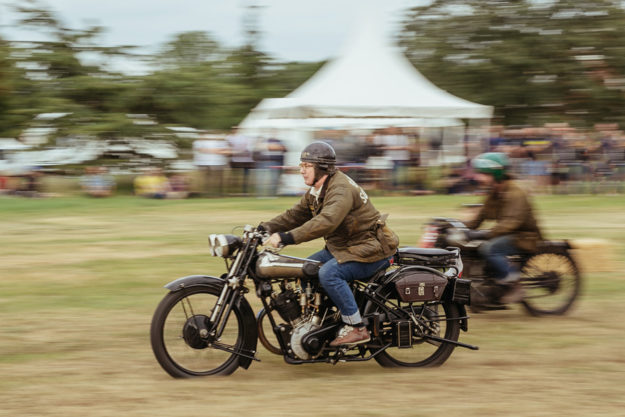
How did you get started in motorcycle photography? Back in 2014 when I shot my first motorcycle event—DGR London—I got approached by people from Triumph, who wanted to use some of my images for their social media. This was a great incentive to get into more exciting events within the emerging custom motorcycle culture. The guys at The Bike Shed have also been a great inspiration and showed strong support.
Are you a full-time photographer? I work as a jewelry photographer for a company in London when I’m not shooting bikes.
What equipment do you use? Canon 6D DSLR.
Your favorite shooting location? I really love the combination of beautiful landscapes and pretty motorcycles, but to be honest, I don’t have one particular favorite location, I’m trying to make the most of what’s available. Good weather usually helps a lot.
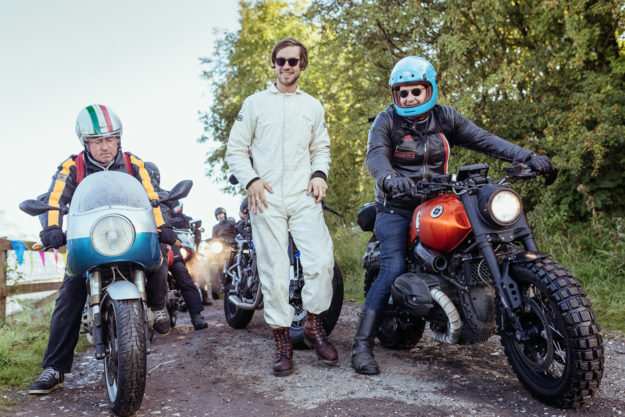
Your favorite subject matter to shoot? It’s always inspiring to shoot someone doing what they genuinely love. So, motorcycles being ridden in their natural habitat must be it.
Let’s talk postproduction—what’s your process? How do you feel about filters? I use Adobe Camera Raw with some custom presets. I’m really picky about my colors.
What about Instagram? Love it to bits! Give me a follow at @mjstudio_uk.
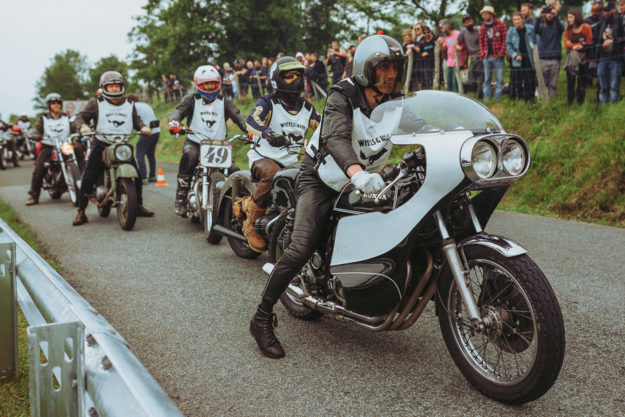
Tell us about shooting Wheels and Waves This year’s Wheels and Waves was my third one so far, and it just never disappoints. If there is a perfect working holiday, for me it’s Wheels and Waves. You get the amazing landscape and architecture of the Basque country combined with thousands of amazing custom bikes rolling in from all over Europe, and sometimes much further. It’s always a real treat for me to shoot there.
If you had one piece of advice for readers who like to shoot bikes, what would it be? Find the imagery that inspires you, then get out there and shoot! You’ll get better if you’re persistent.
Mihail Jershov Web | Facebook | Instagram
Header image: Enduro Fun In Latvia, 2016, by Mihail Jershov.
